 |
||||||||||||
 |
 |
 |
||||||||||||||
 |
||||||||||||||||
A total solar eclipse has no comparison in natural phenomenon. It is a rare occurrence that most people never have the chance to witness even once in their entire lives. For someone lucky enough to see their first, it is usually never enough. To see a total solar eclipse usually requires extensive travel. It is well worth the effort. To have one in your own backyard is literally a one in a million chance over the course of your entire lifetime. Much more common is the partial solar eclipse. However, none of the really cool things that happen during a total eclipse will occur during a partial eclipse, unless you are within a few hundred miles of the centerline. The light polarizes and trees will cast crescent shadows of the Sun as totality nears. My wife and I (yes, we are wife and wife!) have been lucky enough to see three total solar eclipses. The first was in February 1979 in the Pacific Northwest. The second in July 1991, in Cabo San Lucas, Mexico. And the third was in March 2006, along the Mediterranean Coast at Side/Manavgat, Turkey. This was the first time I served as the team leader for a tour group and this was an experience almost as exciting as the eclipse itself. This trip covered many historic sites in Turkey, and even included a day at Space Camp Turkey. We called ourselves, The Best Eclipse Tour Group ever! |
||||||||||||||||
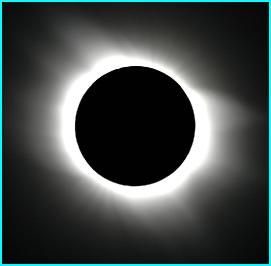 |
||||||||||||||||
 |
||||||||||||||||
 |
||||||||||||||||
 |
||||||||||||||||
 |
||||||||||||||||
We have currently seen 4 total solar eclipses. 26 Feb. 1979, Washington: 2 min. 16.8 sec. 11 July 1991, Cabo San Lucas, Baja California: 6 min. 51.8 sec. 29 March 2006, Manavgat, Turkey: 3 min. 45.3 sec. 21 August 2017, Madras, Oregon: 2 min. 2.7 sec. Time In Totality: 14 min. 56.6 sec. |
||||||||||||||||
 |
||||||||||||||||
NOTE: Cherie is visible at 1:34 on this YouTube video from Maryhill, Washington, 26 February 1979. |
||||||||||||||||
— 11 July 1991 • Cabo San Lucas • Baja California Sur • Mexico — |
||
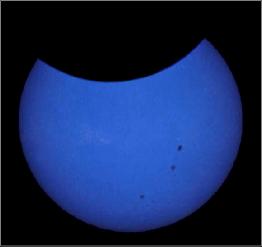 |
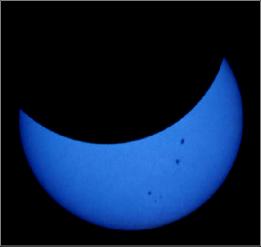 |
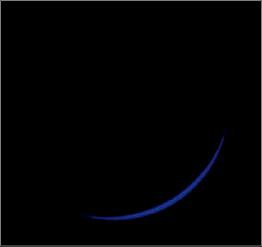 |
||||||
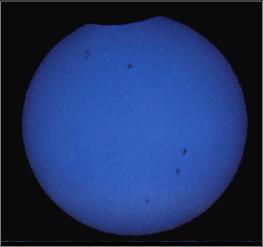 |
||||||||
Partial phases: 10:24 – 11:50 MST, Thursday, 11 July 1991. The blue tint to the Sun in the partial eclipse phases shown above is caused by the mylar solar filter used over the camera lens to protect the camera and the photographer from the intensity of the light. This illustrates how people who only witness a partial eclipse miss all the fascinating effects, not to mention the beautiful corona, only visible once the filters come off, as shown in the sequence below. Note the sunspots visible in the filtered photos. These are storms on the solar surface and the spots are larger than the Earth! |
||
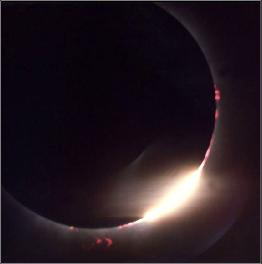 |
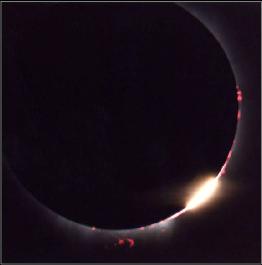 |
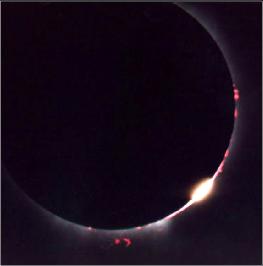 |
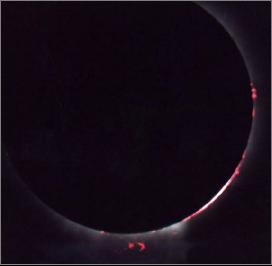 |
|||||
Totality Begins: 11:50 MST. The sequence above is taken in natural light as the Moon completely covers the Sun. This is what we saw in person, directly above our heads that morning. Anyone within the shadow of the Moon falling on Earth is in the path of totality. The shadow was 160 miles in diameter and traveling at 1,450 mph. Since the total phase of the eclipse took place very close to noon, local time, the Sun was nearly straight overhead (82°). This created the effect for the observers during totality of having the entire 360° horizon look like it was sunset. The temperature dropped over 10°F during the 6 minutes and 53 seconds we were in the shadow. It is impossible to describe the feeling one has when witnessing something like this live. Only another person who has experienced a total solar eclipse can understand what you can only attempt to describe. |
||
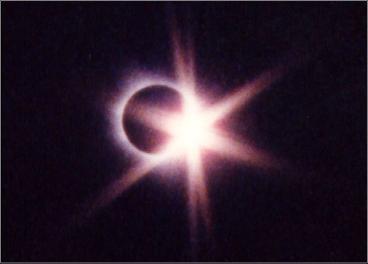 |
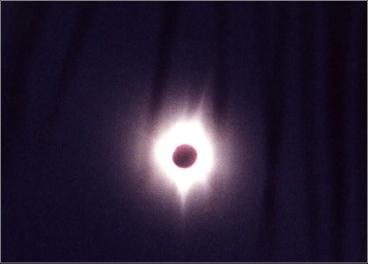 |
|||
The Diamond Ring effect occurs in the last moments before totality as the final rays of Sun are channeled through the mountains on the perimeter of the Moon. |
A long exposure from behind a fern plant gives some connection to the location, just a few miles outside Cabo San Lucas. |
|||
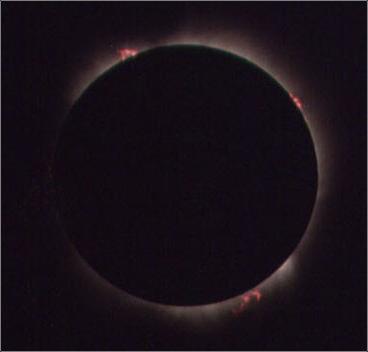 |
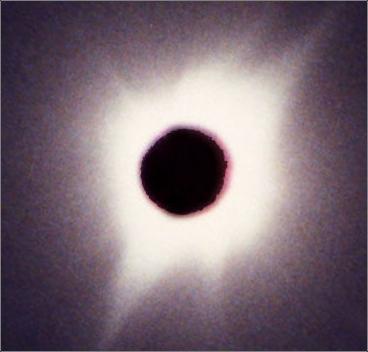 |
|||
A short exposure (about 1/500th of a second) captures the inner corona and solar flares during totality. |
A longer exposure shows more of the extent of the outer corona. The 1991 corona was magnificent and extended much farther to the view from the naked eye than what was captured in photographs. |
|||
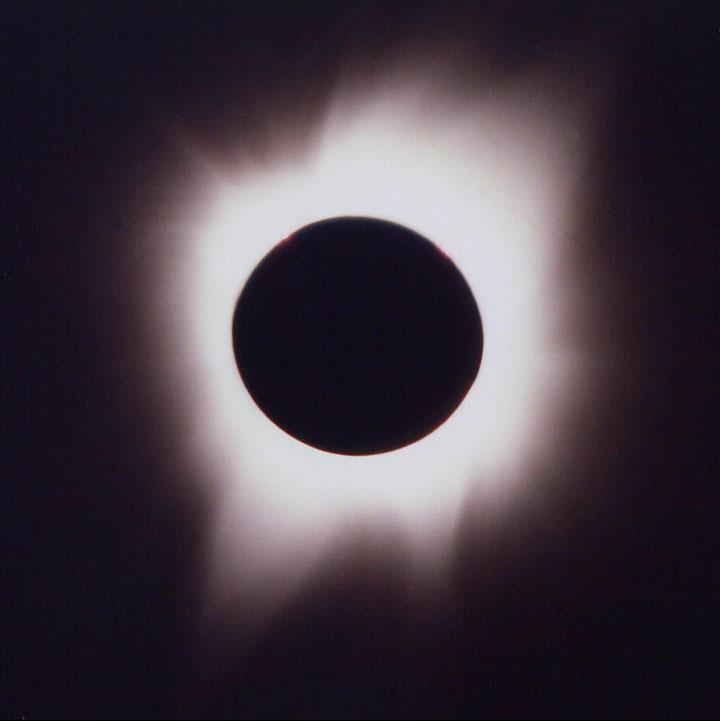 |
||
Following totality, the Moon slowly uncovered the Sun until the eclipse was completely finished at 13:21 MST. Total time from start to finish of 2 hours 57 minutes. |
||
— Annular Eclipse — |
||
An annual eclipse occurs when the Moon is father out in its orbit (thus its apparent diameter is smaller), so the Sun is not completely blocked from view. In this instance, a ring, or annulus, shows all the way around the outside of the Moon. Just six months after the July 1991 total solar eclipse in Mexico, an annular eclipse occurred right on our doorstep in Southern California on Saturday, 4 January 1992. The eclipse progressed as the Sun was setting, providing a spectacular view all up and down the coast. Clouds threatened the event as the Sun approached the horizon at maximum eclipse, but the view was amazing nonetheless. Annularity occurred at 16:50 PST. |
|||||
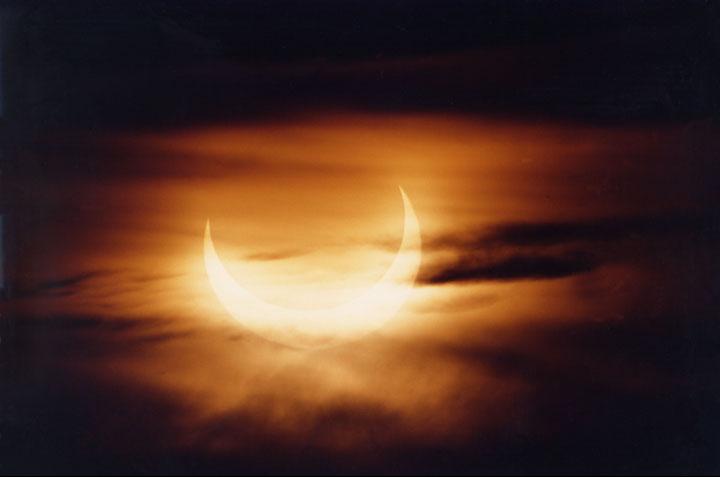 |
|||||
WARNING
It is never safe to look at a partial eclipse without proper eye protection. Even a small percentage of the Sun being visible from behind the Moon can cause serious eye injury and even blindness. Damage can be almost instantaneous, so even a short glance is not safe. There is nothing special about the light from an eclipse. It is just that during those times, people often try to look directly at the Sun to see what is happening. You would never stare at the Sun during normal circumstances so don't do it during an eclipse either! |
|||||
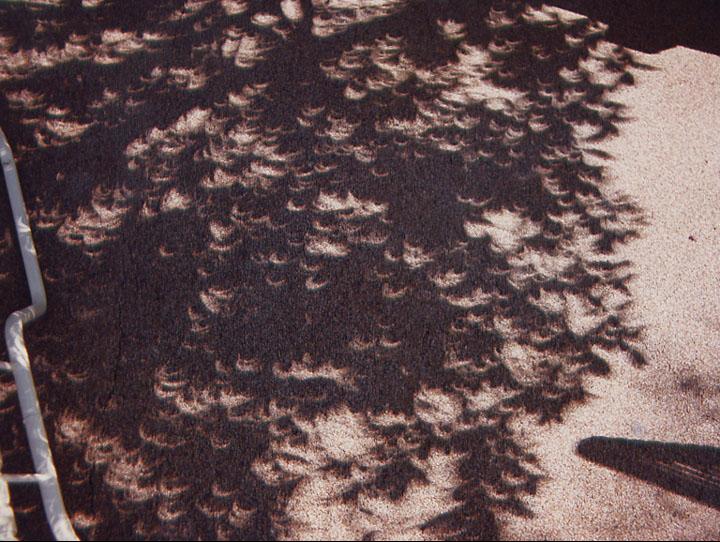 |
||||||||||
On Tuesday, 10 May 1994, another annular eclipse happened, this time passing above El Paso, Texas. The shots at right show the phenomenon of crescent Sun shadows being cast under trees as the light polarized and the leaves focus the image on the ground. The lower image shows the full ring shadow which occurred during the annular part of the eclipse at 10:07 MDT. |
||||||||||
 |
||||||||||
Photo detail |
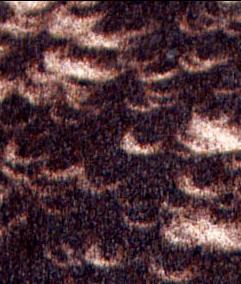 |
|||||||||
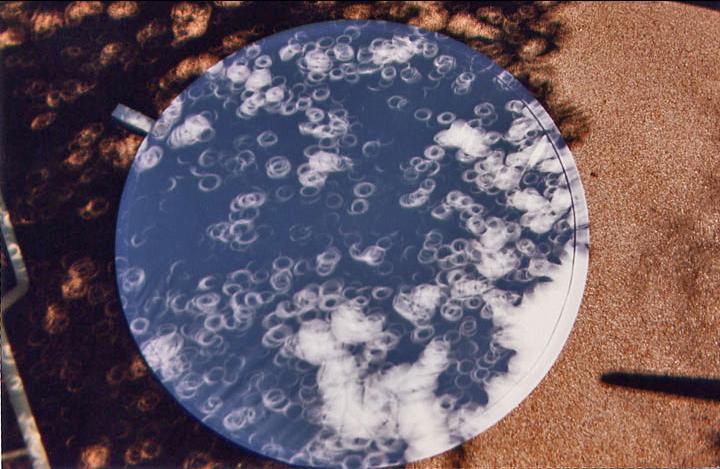 |
||||||||
The annular eclipse is an interesting site to watch, however, as mentioned previously, there is enough percentage of the Sun still visible, that viewing directly is impossible. Filters must be used throughout the entire eclipse. You do get the bizarre phenomenon such as the eclipse shadows under trees and the light polarizes, but, the best part of a solar eclipse will be missed — the corona. As you can see by the photo of the annular shadows taken at right, the Sun is still very bright. There is hardly any change in camera aperture to take this photo than if it were full daylight. |
||||||||
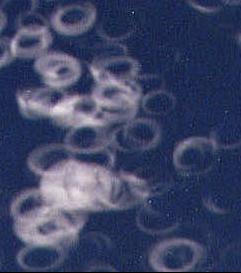 |
||||||||
Photo detail |
||||||||
First Total Solar Eclipse At left is a photo from my first total solar eclipse, taken on the morning of Monday, 26 February 1979. I was with friends Rob and Lynn Lanktree. We were parked along the westbound side of Interstate-90, approximately 100 miles southwest of Spokane, Washington. I was still in the Air Force at the time, as were Rob and Lynn. The base had come under an Operational Readiness Inspection (ORI) just at the time the eclipse was scheduled. We all made special arrangements to be along the centerline, since Fairchild AFB was not quite close enough to see totality. We raced along I-90 to get as far into the eclipse path as possible in the time we had been allowed by the government. I watched from the back seat of their Saab and when I calculated we only had enough time to stop and set up the telescope, I told Rob to stop. Many others were also pulling over to the side of the highway. Normally full of interstate trucks and zooming cars, the highway was quiet as we all looked upward. My only problem was the fact that in my haste to get everything packed in the car for this quick trip, I had neglected to take the key for the telescope case! With only minutes to go and no alternative, I grabbed a crowbar from the car and popped the lid. We were set up with time to spare. You Tube Link for ABC News Special for 26 February 1979 total solar eclipse, and for a video of the eclipse at the Stonehenge monument in Maryhill, Washington. Note that at 1:34 in this video is my wife, Cherie. |
||||
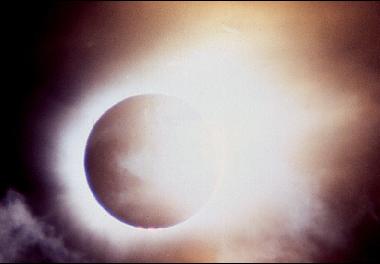 |
||||